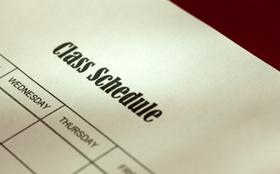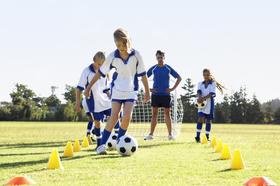For the 2025 school year, there is 1 public school serving 90 students in Endazhi-Nitaawiging School District.
Public Schools in Endazhi-Nitaawiging School District have a diversity score of 0.07, which is less than the Minnesota public school average of 0.59.
Minority enrollment is 100% of the student body (majority American Indian), which is more than the Minnesota public school average of 39% (majority Black and Hispanic).
Overview
This School District
This State (MN)
# Schools
1 School
2,732 Schools
# Students
90 Students
870,790 Students
# Teachers
4 Teachers
57,779 Teachers
Student : Teacher Ratio
23:1
23:1
Students by Ethnicity:
Diversity Score
0.07
0.59
# American Indian Students
87 Students
15,699 Students
% American Indian Students
97%
2%
# Asian Students
n/a
61,819 Students
% Asian Students
n/a
7%
# Hispanic Students
1 Student
99,588 Students
% Hispanic Students
1%
12%
# Black Students
n/a
102,736 Students
% Black Students
n/a
12%
# White Students
n/a
534,612 Students
% White Students
n/a
61%
# Hawaiian Students
n/a
1,007 Students
% Hawaiian Students
n/a
n/a
# Two or more races Students
2 Students
55,329 Students
% of Two or more races Students
2%
6%
Students by Grade:
# Students in PK Grade:
-
24,648
# Students in K Grade:
17
59,654
# Students in 1st Grade:
14
61,859
# Students in 2nd Grade:
18
63,560
# Students in 3rd Grade:
13
61,751
# Students in 4th Grade:
11
63,575
# Students in 5th Grade:
10
63,290
# Students in 6th Grade:
7
63,180
# Students in 7th Grade:
-
63,243
# Students in 8th Grade:
-
64,723
# Students in 9th Grade:
-
67,716
# Students in 10th Grade:
-
69,634
# Students in 11th Grade:
-
69,942
# Students in 12th Grade:
-
74,015
# Ungraded Students:
-
-
Best Endazhi-Nitaawiging School District Public Schools (2025)
School
(Math and Reading Proficiency)
(Math and Reading Proficiency)
Location
Grades
Students
Rank: n/an/a
Endazhi-nitaawiging
Charter School
25065 Highway 1 W
Redlake, MN 56671
(218) 679-1060
Redlake, MN 56671
(218) 679-1060
Grades: K-6
| 90 students
Frequently Asked Questions
How many schools belong to Endazhi-Nitaawiging School District?
Endazhi-Nitaawiging School District manages 1 public schools serving 90 students.
What is the racial composition of students in Endazhi-Nitaawiging School District?
97% of Endazhi-Nitaawiging School District students are American Indian, 2% of students are Two or more races, and 1% of students are Hispanic.
What is the student/teacher ratio of Endazhi-Nitaawiging School District?
Endazhi-Nitaawiging School District has a student/teacher ratio of 23:1, which is higher than the Minnesota state average of 15:1.
Recent Articles

Year-Round Or Traditional Schedule?
Which is more appropriate for your child? A year-round attendance schedule or traditional schedule? We look at the pros and cons.

Why You Should Encourage Your Child to Join a Sports Team
Participating in team sports has a great many benefits for children, there is no doubt. In this article you will learn what those benefits are.

White Students are Now the Minority in U.S. Public Schools
Increasing birth rates among immigrant families from Asia and Central and South America, combined with lower birth rates among white families, means that for the first time in history, public school students in the United States are majority-minority. This shift in demographics poses difficulties for schools as they work to accommodate children of varying language abilities and socio-economic backgrounds.





